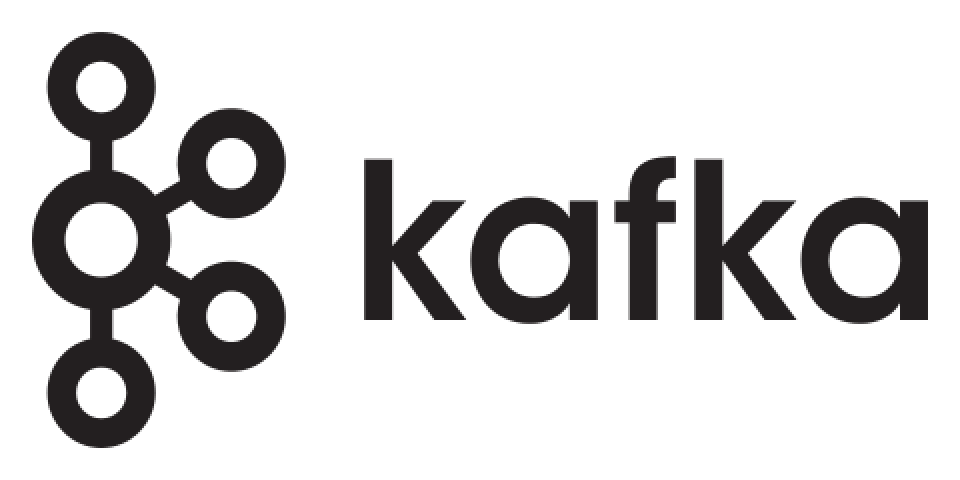Disconnected systems, inconsistent data sources, and a lack of real-time access to meaningful information can make identifying opportunities or making informed strategic decisions difficult.
When critical decisions are based on incomplete or outdated data, the risks can be high—whether it’s missing out on market trends, misjudging customer needs, or inefficiently allocating resources.
For many organizations, the solution lies in a more structured approach to managing their data.
By leveraging comprehensive data solutions, businesses can transform disorganized data into a valuable asset. From the initial step of data extraction to building scalable infrastructures and applying advanced analytics, these solutions ensure that data actively drives innovation.This article explores how effective data solutions, from data extraction to AI-powered insights, are enabling businesses to stay competitive, adapt to market changes, and drive future innovation.
The True Cost of Implementing AI & Data Solutions in 2025 - A Comprehensive Guide For Business Leaders
Importance of Data Solutions for Business Growth
Organizations struggle with data that’s siloed across various departments, leaving decision-makers without a clear, unified view of the business landscape. This disconnect leads to missed opportunities, inefficiencies, and an inability to respond to market shifts in real time.
Data solutions offer a comprehensive approach to solving these problems by integrating data from multiple sources and transforming it into a cohesive framework. When managed properly, data becomes a strategic asset that supports every aspect of business operations.
Effective data solutions empower businesses to:
- Improve decision-making by providing accurate, real-time insights.
- Enhance operational efficiency by identifying bottlenecks and optimizing processes.
- Foster innovation by uncovering patterns and trends that can guide product development and market expansion.
The Foundation: Effective Data Extraction
Without an effective extraction process, businesses risk operating on incomplete or outdated information, which can lead to misguided decision-making. This makes data extraction a critical component of modern data solutions.
Data extraction is more than just gathering information. It’s about pulling accurate, relevant, and up-to-date data from a variety of sources, ready to be transformed and analyzed.
Harvard Business Review says companies that use their data effectively are 5% more productive and 6% more profitable than their peers. The importance of well-implemented data extraction systems cannot be overstated.
To mitigate risks, businesses should implement the following best practices to ensure they derive maximum value from their data solutions:
- Data Quality Management: Ensure that the data being extracted is of the highest quality by implementing automated validation checks. This helps filter out duplicate, corrupt, or irrelevant data, preventing inaccurate analysis.
- Security and Compliance: As businesses handle increasingly sensitive data, adhering to data privacy regulations like GDPR and CCPA is essential. Data extraction tools should include built-in encryption, audit trails, and compliance features to safeguard information.
- Scalability: With data volumes growing exponentially, organizations need tools that can scale with their needs. Solutions like AWS Glue or Apache NiFi offer flexibility to manage expanding data without sacrificing performance.
- Real-Time Capabilities: In competitive industries, real-time data extraction is critical. Access to real-time data enables faster decision-making and immediate responses to market changes, giving businesses a competitive edge.
Data Extraction Tools for Businesses
Central to this process is ETL (Extract, Transform, Load)—a critical methodology in data engineering. ETL systems extract raw data from various sources, transform it into a standardized format that aligns with business goals, and load it into a centralized repository, typically a data warehouse or data lake.
This ensures that data is cleansed, organized, and made ready for analysis. An optimized ETL pipeline enables organizations to not only access accurate and timely data but also to integrate it seamlessly with advanced analytics and machine learning tools.
Here are several industry-leading tools that enterprises can adopt:
- Apache NiFi A robust, open-source tool that simplifies the process of data extraction from diverse and complex data environments. Apache NiFi supports real-time data movement, ensuring that organizations have access to fresh and accurate information.
- Talend Talend offers a suite of open-source and enterprise data integration tools that make extracting, transforming, and loading (ETL) data seamless. With built-in connectors for cloud platforms and real-time data pipelines, Talend is ideal for consolidating data from multiple sources.
- Fivetran Fivetran offers automated data pipelines that eliminate the need for complex ETL coding. It allows businesses to extract data from various SaaS applications, databases, and event streams, delivering it directly into a data warehouse for real-time analysis.
- Microsoft Power Automate Power Automate allows businesses to build automated workflows that handle data extraction from various sources, including Excel, SharePoint, and cloud-based systems. Seamlessly integrates with Microsoft services.
Data Engineering at Scale: Turning Raw Data into Business Value
For technology leaders, the ability to build and manage scalable, reliable data architectures is essential in today’s data-driven landscape.
Data engineering is the process of designing, constructing, and maintaining the architecture that supports the flow and processing of data.
It’s the basis on which businesses apply data solutions—such as advanced analytics, machine learning, and AI—to solve complex challenges and capitalize on new opportunities.
Companies that excel in data-driven decision-making are 23 times more likely to outperform their competitors in customer acquisition.
Key Components of a Scalable Data Engineering Strategy
Data Lakes and Warehouses
Data lakes and warehouses are central repositories that store structured and unstructured data. A data lake allows businesses to store vast amounts of raw data in its original format, making it accessible for real-time or batch analysis. Meanwhile, a data warehouse stores structured, processed data that is ready for analysis. According to Forbes, the global data warehouse market is expected to grow to $51.18 billion by 2028, highlighting the increasing reliance on these platforms for data storage and analysis.
ETL Pipelines
As mentioned earlier, ETL (Extract, Transform, Load) pipelines ensure that data flows seamlessly from various sources into data lakes or warehouses. By automating this process, businesses can ensure that data is clean, consistent, and available for immediate analysis.
Data Governance
As data grows in scale, ensuring its accuracy, security, and compliance with regulations becomes paramount. Leading enterprises implement data governance frameworks that define how data is collected, stored, and used across the organization. This prevents data silos, improves data quality, and ensures adherence to privacy regulations such as GDPR.
Key Platforms for Data Engineering

Google Cloud Platform (GCP)
GCP offers a suite of data engineering tools, including BigQuery, a fully managed data warehouse that supports real-time analytics on large datasets. Additionally, Dataflow provides a unified stream and batch data processing service, allowing organizations to build scalable, real-time data pipelines. GCP is ideal for companies looking to leverage machine learning and AI tools, thanks to its integration with TensorFlow.

Amazon Web Services (AWS)
AWS provides a comprehensive set of data engineering tools, including Amazon Redshift for data warehousing, AWS Glue for ETL operations, and Kinesis for real-time data streaming. With its highly scalable and flexible architecture, AWS is a popular choice for enterprises looking to manage large volumes of data efficiently. SageMaker adds machine learning capabilities for companies seeking to integrate AI into their data workflows.

Microsoft Azure
Azure offers a robust data engineering ecosystem through Azure Synapse Analytics, a powerful analytics service that combines big data and data warehousing. Azure Data Factory is another essential tool for building ETL pipelines, enabling the integration of data from a variety of sources. Azure’s seamless integration with Microsoft tools like Power BI makes it an attractive option for businesses that rely on the Microsoft stack for their operations.

Apache Kafka
Kafka is an open-source distributed streaming platform used for building real-time data pipelines and streaming applications. It allows businesses to publish and subscribe to streams of records and process them in real time. Kafka is ideal for industries that require low-latency data processing, such as finance, retail, and telecommunications.
Our expertise in leveraging these industry-leading platforms enables your organization to unlock the full potential of its data, empowering you to make data-driven decisions with confidence.
Data Analysis: Transforming Data into Actionable Insights
Technology leaders understand that without robust analytical frameworks in place, raw data remains just that—an untapped asset.
Data solutions today go beyond basic reporting; they combine advanced analytics, predictive models, and machine learning to transform mountains of data into actionable strategies.
At its core, data analysis is about more than just understanding historical data—it’s about predicting future trends, optimizing operations, and identifying new growth opportunities.
According to a study by Accenture, data-driven companies are 2.6 times more likely to have significantly improved business performance, proving that harnessing data is a competitive advantage in today’s fast-paced markets.
There are various approaches to data analysis that businesses can adopt depending on their goals:
- Descriptive Analytics: This type of analysis helps companies understand past behaviors and trends by summarizing historical data. It provides valuable insights into what happened and is often the first step in any analytical journey.
- Predictive Analytics: Using historical data, predictive analytics identifies future probabilities and trends. Machine learning models play a key role in predictive analysis by uncovering patterns and relationships within the data that aren’t immediately apparent.
- Prescriptive Analytics: This advanced form of analysis goes beyond predictions and suggests specific actions that can optimize outcomes. By simulating multiple scenarios, prescriptive analytics helps decision-makers understand the implications of different strategies.
Advanced data analysis enables organizations to make informed, data-driven decisions by identifying operational bottlenecks, optimizing workflows, and reducing inefficiencies. It also provides deeper insights into customer behavior, leading to personalized marketing and improved retention.
Moreover, businesses that leverage data analysis to spot market trends, predict customer needs, and streamline operations can gain a significant competitive advantage, allowing them to respond faster and more effectively than their competitors.
Tools for Advanced Data Analysis
Below are some of the most effective platforms for advanced data analysis:
- Tableau Known for its powerful visualization capabilities, Tableau enables businesses to create interactive, real-time dashboards that help in monitoring KPIs, sales performance, and customer behaviors. It’s particularly useful for companies looking to democratize data, allowing non-technical teams to interpret complex datasets visually.
- Microsoft Power BI Power BI integrates seamlessly with other Microsoft products, making it a preferred tool for businesses already using the Microsoft ecosystem. It allows for robust data modeling, real-time reporting, and integration with advanced AI capabilities, making it ideal for companies that want to blend business intelligence with advanced analytics.
- Python and R For more customized and in-depth analysis, programming languages like Python and R offer powerful libraries such as Pandas, NumPy, and SciPy for statistical analysis, as well as machine learning frameworks like Scikit-learn and TensorFlow. These languages are often preferred by data scientists and engineers for their flexibility and scalability.
- Google Cloud AI Platform For businesses leveraging cloud infrastructure, Google Cloud AI Platform provides tools for building and deploying machine learning models at scale. It offers integration with BigQuery for data analysis and supports end-to-end machine learning workflows.
How AI Transforms Data into Strategic Insights
A report estimates that AI could contribute up to $15.7 trillion to the global economy by 2030, underscoring the technology’s transformative potential across industries.
While traditional analytics helps businesses understand what happened in the past, AI-powered insights go a step further, enabling real-time decision-making and predictive forecasting.Some of the key benefits of leveraging AI within data solutions include:
- Predictive Analytics: AI algorithms can process historical data to predict future trends, allowing businesses to anticipate customer needs, market shifts, and potential risks. This can significantly improve planning and resource allocation.
- Automated Decision-Making: AI systems can analyze real-time data and make automated decisions based on pre-set criteria, speeding up response times for dynamic industries such as finance, retail, and healthcare.
- Enhanced Personalization: AI-driven insights allow for highly personalized customer experiences by analyzing behavioral patterns and preferences. This not only improves customer satisfaction but also increases engagement and retention.
However, to fully unlock AI’s transformative potential, it’s crucial to work with partners who can tailor AI strategies to your unique needs.
Artiverse can help you maximize the value of AI by implementing customized, AI-driven data solutions that go beyond surface-level insights. You can ensure that your data infrastructure is ready for the future, driving predictive and prescriptive insights that will set your business apart.
Case Study: How Netflix Uses Data Solutions to Gain a Competitive Edge

With over 230 million subscribers worldwide, Netflix’s success is deeply rooted in its ability to harness the power of data to predict customer preferences, optimize content delivery, and personalize user experiences—all at an unparalleled scale.
The Challenge: Managing Massive Data Volumes
The Solution: Scalable Data Platforms and AI-Powered Insights
Netflix’s AI-powered algorithms analyze user interactions, viewing habits, and content preferences to create personalized recommendations for each user. By utilizing machine learning models, Netflix can predict what content will resonate with specific audiences, helping them retain subscribers and reduce churn.
Moreover, Netflix’s data platform team has also built robust ETL pipelines that automate the flow of data between various systems, enabling real-time analysis and reporting. This ensures that Netflix can rapidly adjust content delivery and performance optimization strategies, creating a seamless user experience globally.
Results: A Data-Driven Competitive Advantage
Furthermore, Netflix’s predictive analytics capabilities enable them to make strategic decisions regarding content production and acquisition. By analyzing viewer data and market trends, they can invest in original content that is more likely to succeed, resulting in highly popular shows like Stranger Things and The Crown.
Key Takeaways to Unlock the Full Potential of Data Solutions

As the pace of digital transformation accelerates, data has become the lifeblood of modern enterprises. From effective data extraction and engineering to advanced analytics and AI-powered insights, businesses that successfully leverage data solutions are the ones leading the way in innovation and market dominance.

The real power of data is unlocked when these solutions are tailored to the unique needs of your organization. At Artiverse, we understand that no two companies are the same, which is why we offer customized data solutions that help you harness the true potential of your data—from streamlining operations to predicting future trends.

The key takeaway for CTOs, CIOs, and decision-makers is clear: investing in robust data infrastructure and AI-driven insights is not just a technical upgrade—it’s a strategic imperative.

By doing so, you’ll not only improve operational efficiency and customer satisfaction but also gain the agility to stay ahead in an increasingly competitive landscape.

Businesses that prioritize building a future-ready data infrastructure today will be the ones leading tomorrow’s innovations!
Frequently Asked Questions
What are data solutions, and why are they important for my business?
Data solutions refer to the tools and strategies used to collect, process, analyze, and store data in a way that supports better decision-making and business outcomes. For businesses, implementing effective data solutions is crucial because it helps streamline operations, improve decision-making through real-time analytics, and optimize processes by providing actionable insights.
How can data solutions help enhance data security and compliance?
Data solutions play a vital role in enhancing data security and ensuring compliance with regulations like GDPR and CCPA. By implementing encryption, multi-factor authentication, and robust data governance policies, businesses can protect sensitive information and avoid costly penalties. These solutions also help monitor data usage and ensure that data is handled according to legal requirements, safeguarding both the company and its customers.
How can cloud-based data solutions benefit my company?
Cloud-based data solutions, such as AWS, Google BigQuery, and Microsoft Azure, offer businesses the flexibility to store, process, and analyze data without needing expensive on-premise hardware. These solutions provide scalability, allowing companies to increase capacity as needed and reduce costs by only paying for the resources they use. Additionally, cloud platforms ensure data is easily accessible and secure.
What are the key challenges businesses face when implementing data solutions?
Common challenges include data fragmentation, where data is siloed across departments, leading to incomplete insights; managing the volume of data, which can overwhelm internal systems; and ensuring compliance with data regulations like GDPR or CCPA. Implementing well-structured data solutions helps resolve these issues by centralizing data, ensuring regulatory compliance, and providing the right infrastructure for scalable data management.
How can data solutions help improve decision-making?
Data solutions that incorporate real-time analytics, such as streaming data pipelines, allow businesses to analyze data as it’s generated. This means decision-makers can act immediately on up-to-the-minute information, whether it’s monitoring system performance, optimizing supply chains, or responding to customer behaviors. These solutions enable businesses to remain agile and responsive to dynamic market conditions.


